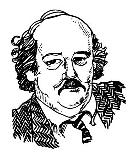(Syndicated to Kansas newspapers Nov. 23, 2015)
 Nothing quite like getting the turkey ready for Thanksgiving—or maybe for Birkenstock sandal wearers figuring out how to massage kale leaves into something that looks like a bird—and thinking about those campaigns coming up for the Kansas House and Senate.
Nothing quite like getting the turkey ready for Thanksgiving—or maybe for Birkenstock sandal wearers figuring out how to massage kale leaves into something that looks like a bird—and thinking about those campaigns coming up for the Kansas House and Senate.
Yes, while you’re checking the cranberries, some of us Statehouse folk are wondering just how much—and whose—money will be spent to elect members of the Kansas House and Kansas Senate next fall.
While filings for the Legislature are trickling in—a lot of legislators wait until the session to file for re-election, when their mileage to Topeka is paid for by the Legislature—we’re figuring that someone will run for everything.
And, last year, 248 candidates for the House spent $3.6 million, on their campaigns and the winning 125 spent $2.76 million. That pencils out to $22,080 per head of winner. But, political action committees and out-of-state organizations spent another $1.9 million that didn’t show up on the candidates’ filings, for a total $5.4 million in campaign spending, not all of which was controlled by the actual candidates.
Senators? They were halfway through their four-year terms, and spent most of that election cycle raising money for their upcoming campaigns next year. While there was a mad scramble for campaign money for folks actually on a ballot in 2014, senators still managed to pry away from House and statewide office races $500,000, which means that they had a total of $1.78 million and an election still two years away.
And, clear back in 2012, the last time senators were elected, it cost an average of about $94,000 to win a Senate campaign, again, just the candidate campaign costs, not those out-of-state and political action committee campaigning expenditures.
So, what are we thinking about while wondering whether to go butter-or-margarine in the holiday mashed potatoes? The likely source of the money for those upcoming campaigns.
In 2014, out-of-state organizations spent $1.15 million to elect House members in Kansas where they don’t even live. Those political action committees? They spent $1.7 million in the House races. Out-of-state organizations wound up spending 21% of the money in those races; PACs spent 32% of that election cycle spending. The candidates themselves? Five percent. And, individual contributors gave $1.3 million or about 24% of the money spent on those campaigns.
Seems a little strange that the link between the candidates and the organizations which spent more than half the money for their elections is a little, well…let’s call it obtuse.
It isn’t really “I give to my neighbor” or to that House member I’ve seen at the fair or walking in the 4th of July parade tossing candy to the kids anymore. Nope, most of the money for the last House election came from political action committees which have specific legislation they are interested in and don’t much care whether the candidate is likeable to the folks he/she will theoretically represent. Those out-of-state organizations generally use the same criteria.
Is this a big deal? Well, maybe, maybe not. It will probably make it worthwhile for us Kansans to figure that individual contributors to campaigns either have the right candidate or the wrong one. But that’s for Kansans who are writing personal checks.
Those PACs and out-of-state contributors? They generally aren’t going to care whether a candidate promises to fight for a new highway turnoff in his/her district or protect Lesser Prairie Chickens.
Might be worthwhile digging into what those PACs and out-of-state organizations want in Kansas.
But it’s probably best to get into that after Thanksgiving dinner. That isn’t anything you’ll want to distract you from pumpkin pie…or its kale alternative.
